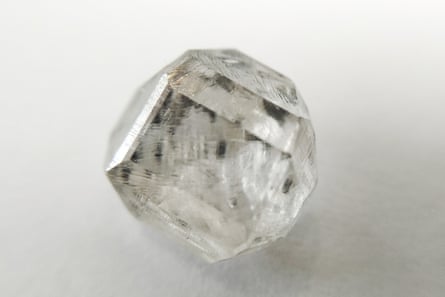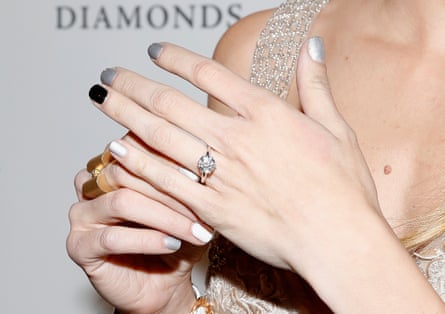All That Glitters: Are Synthetic Diamonds an Ethical Choice?
It's a question I've been asking myself for a long time. I have a weakness for natural stones and find it hard to recognize the poetry in a synthetic or heavily treated stone. I see in stone the geological history of the earth, the bowels of our planet, and I love observing stones, their inclusions, natural shapes and colors.
So the idea of a synthetic diamond of course made its way, and I understand this bias, the research in this field and its ethical dimension of course.
I'd like to share with you this interesting article from the Guardian, which weighs up the pros and cons. To each his own idea, approach and priorities.
Switching to synthetic gems may have environmental upsides but it could harm the very communities consumers worry about
Diamonds have long been in the debt of marketing genius. Until the 1940s they were not a popular choice for engagement rings. Then, in 1947, a stroke of brilliance: De Beers’ “A Diamond is Forever” campaign. The slogan was a hit. The market transformed. Today diamond engagement rings are ubiquitous, winking from the windows of upmarket jewellers.
Earlier this year came another glittering moment in diamond PR. Pandora, the world’s largest jewellery retailer, announced it would be switching entirely to lab-made diamonds. It generated positive headlines around the world, dubbed an “ethical stand against mined diamonds”.
Pandora is not alone. In 2020 De Beers invested in a lab-grown line, launching a facility to churn out up to 400,000 diamonds a year. Other retailers tout their laboratory stones as “” or “an ethical choice”. It is a neat resolution for an industry shadowed by reports of exploitation, deftly crafted for millennial consumers concerned with the ethics of consumption.
But the reality, experts and workers say, is more complicated. Switching en masse to lab-made gems may have environmental upsides, and relieve companies of reputational risks. But it could disfranchise the same communities that consumers are concerned for – and it comes at a moment when traceable, ethically mined gems are more accessible than ever.
‘Something is wrong’
“If you start to grow diamonds in a lab, you’re not only taking away a job, but you’re also closing down communities and closing down countries,” says Urica Primus. “How will [miners] survive, how will they sustain themselves, their livelihoods, their families?”
Primus, 30, is from a mining family in Guyana. One of the poorest countries in South America, Guyana has a history of fuelling profits overseas. British slave-owners grew rich off Guyanese slavery. Natural resources – gold, diamonds, minerals, oil and gas – are its largest export, which about 18% of the population rely on for employment.
After years helping her family mine, Primus started extracting from her own small-scale pit in Tamakay, a gold and diamond-mining region, at 18. Today she is president of the Guyana Women Miners Organisation.
Small-scale mining is tough work, particularly for women. Many mines are extremely remote, in areas Primus calls “raw bush – just jungle and trees”. Miners live with the hazards of attack and armed robbery, women with additional risks of sexual assault. In the rainy season some mines are at risk of collapse, killing miners inside them. But mining is also a crucial source of income, development, funds for education. Companies that care about ethics should invest in improving standards, not disappear, she says.
“These companies have made millions and millions of dollars from mining. Now, what percentage of the profits are they willing to give back, and support the development of the industry that has basically kept them alive for decades?”
Her concern is not only for miners, Primus says. “It’s the government’s ability to finance development of the country by way of the contributions and GDP received from the mining industry, it’s the families of miners … the entire ecosystem of mining will be impacted by that shift.”

It concluded that the mined market faced two major disruptors: the growth of lab-grown gems; and consumers’ increased focus on ethics and sustainability.
read the entire article on:



